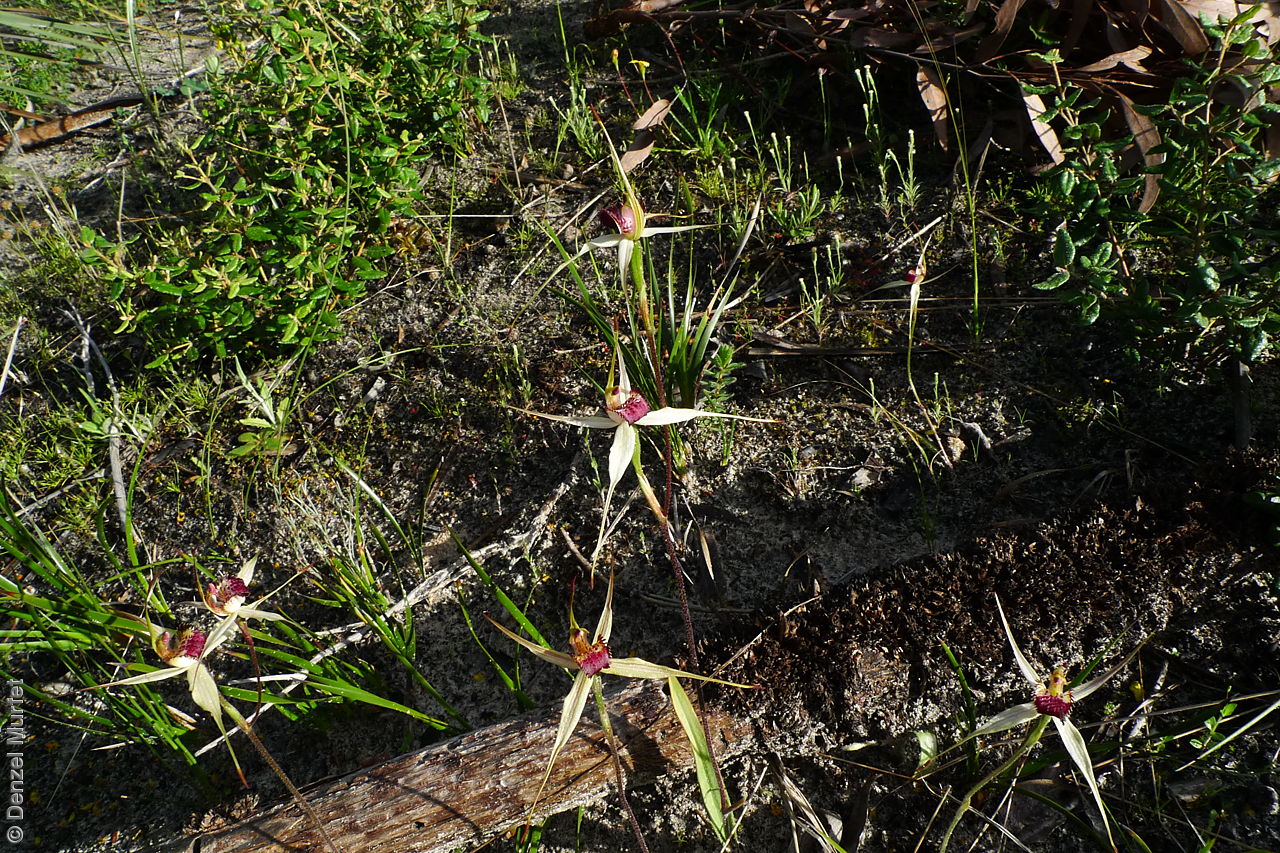
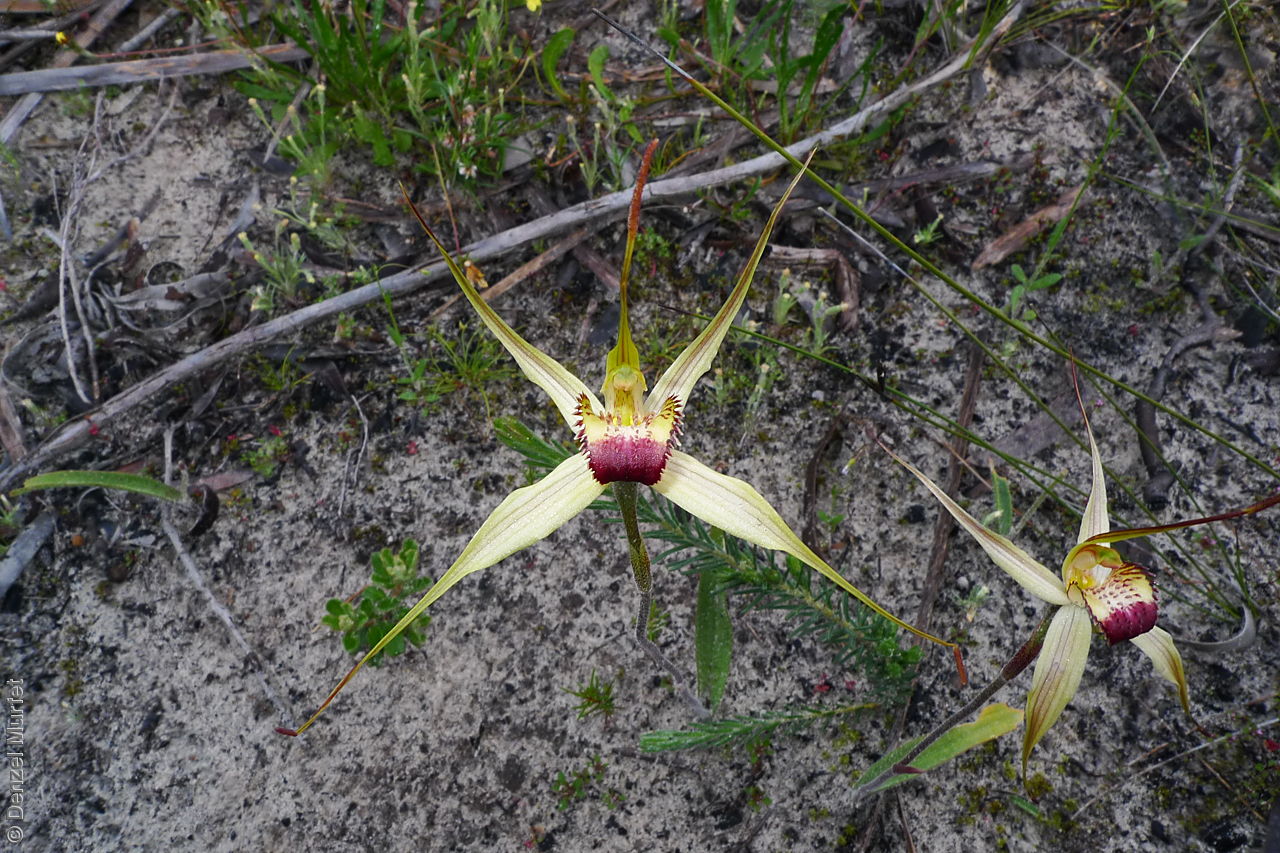
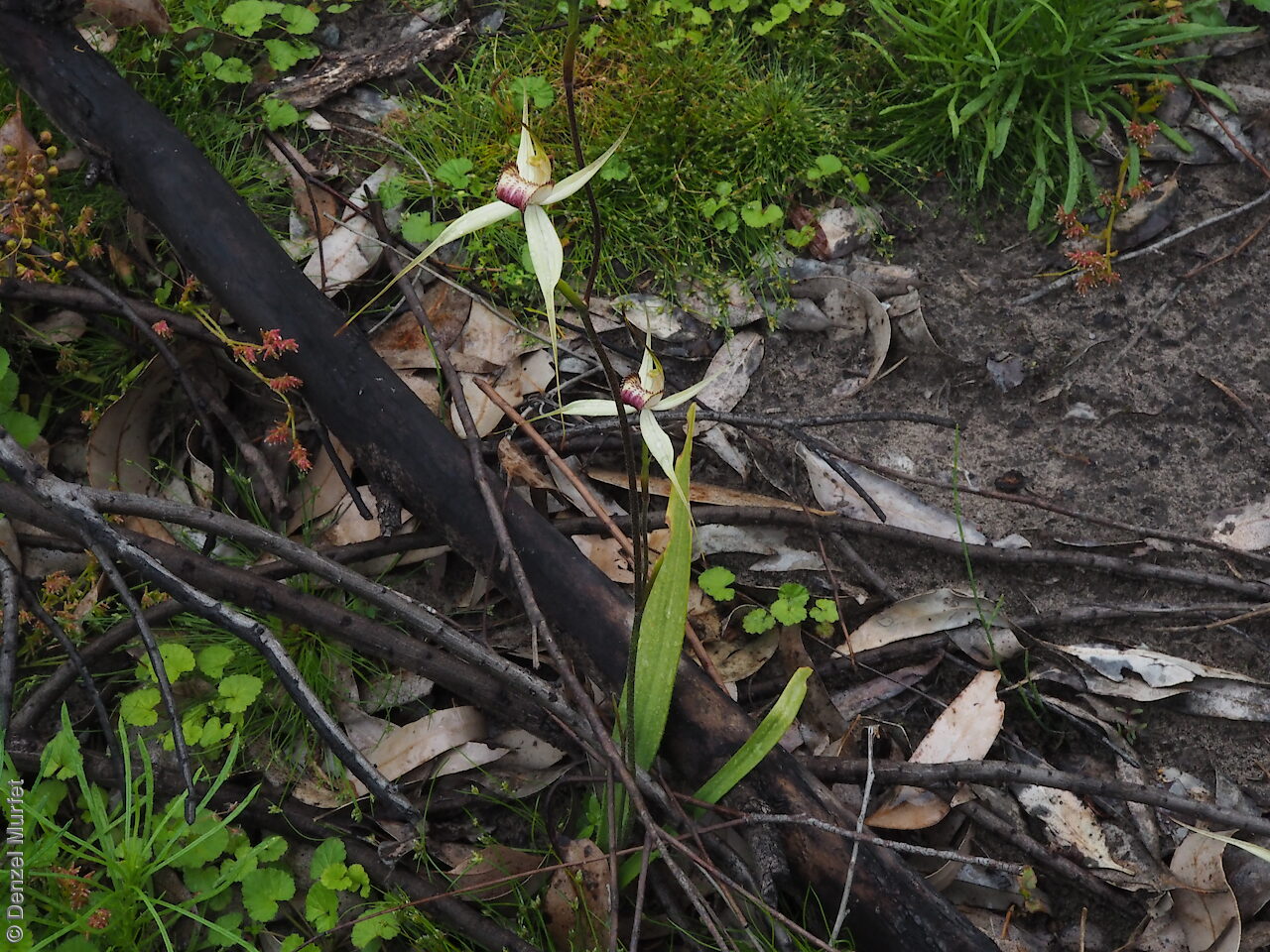
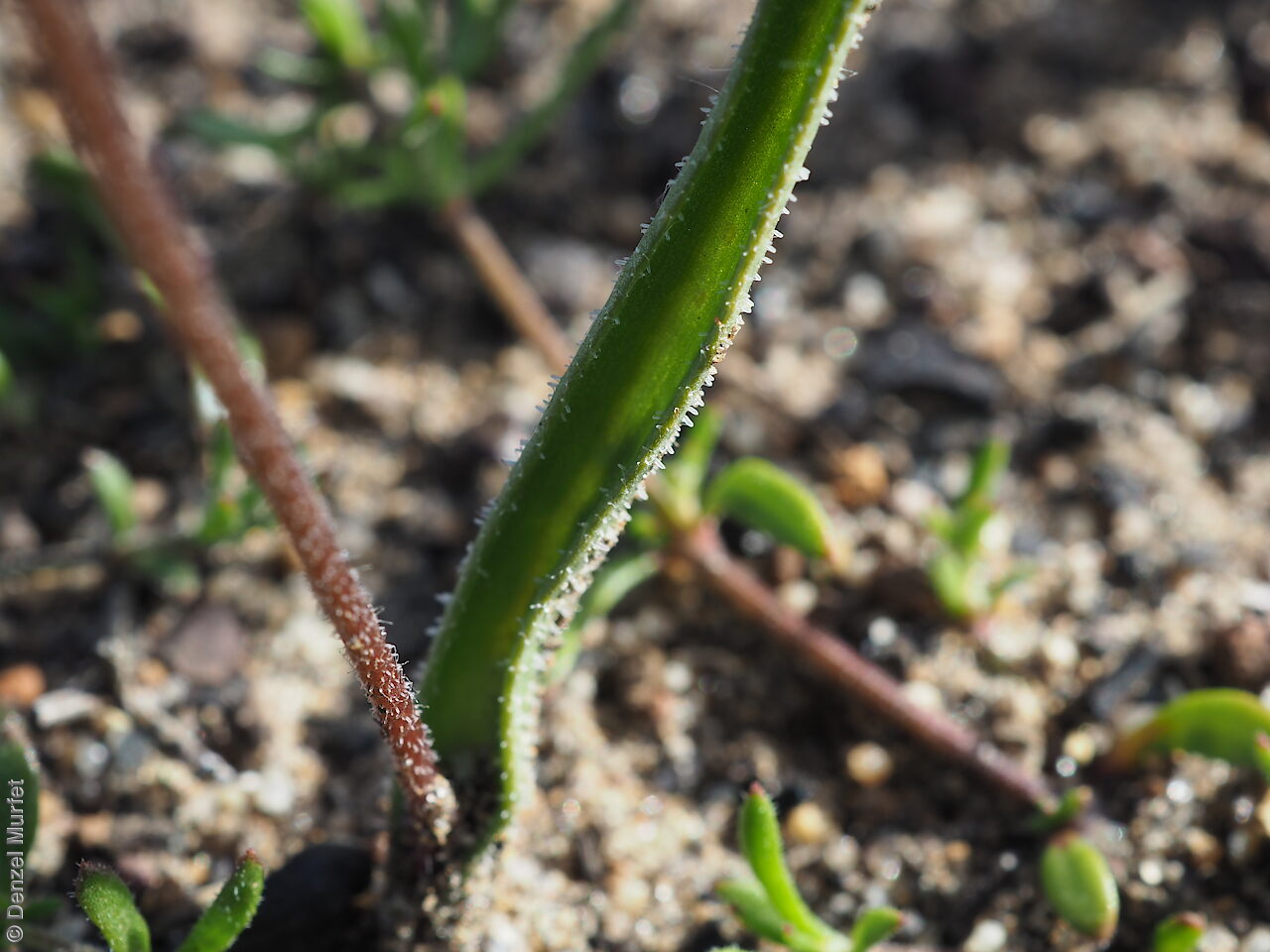
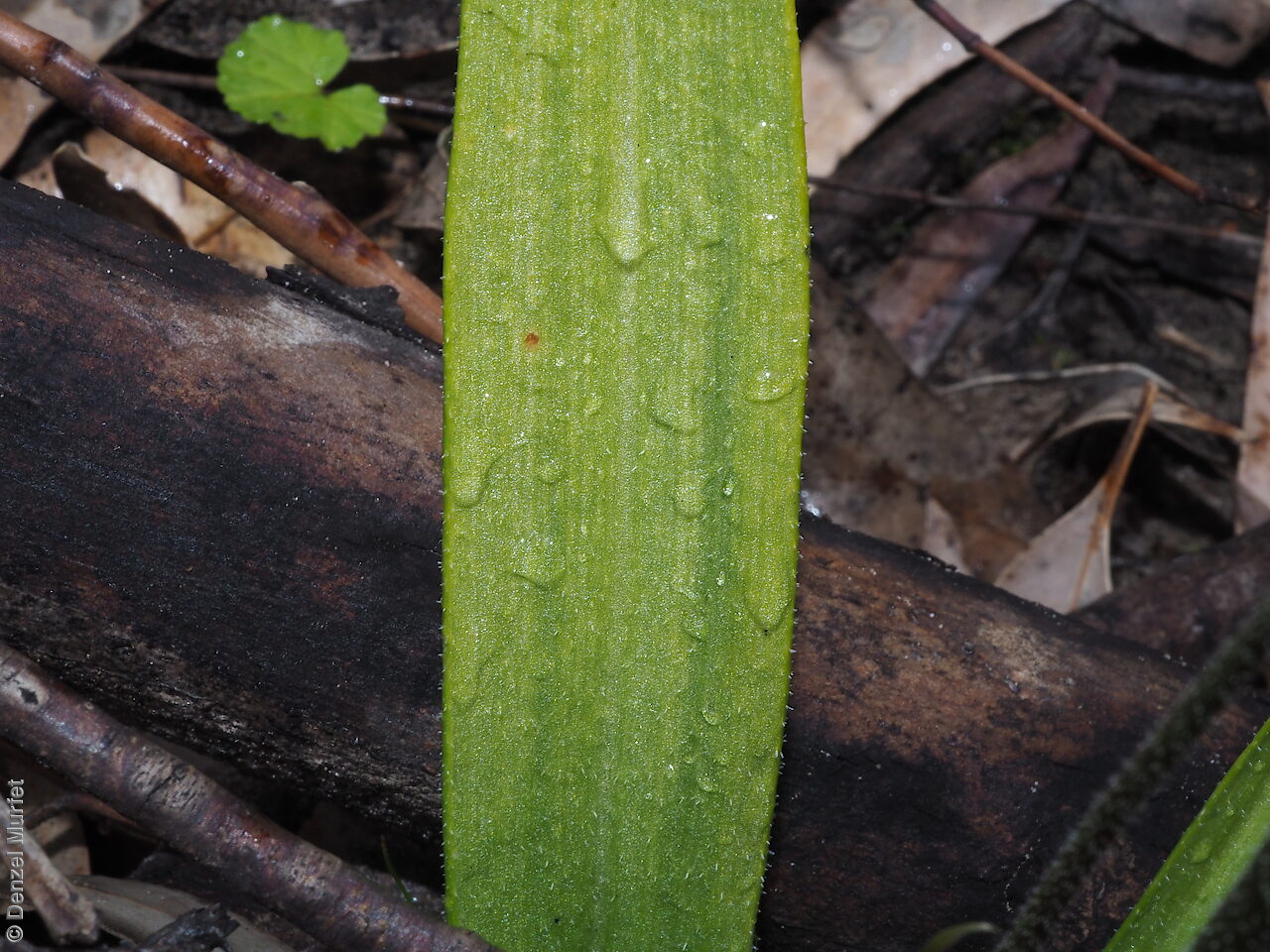
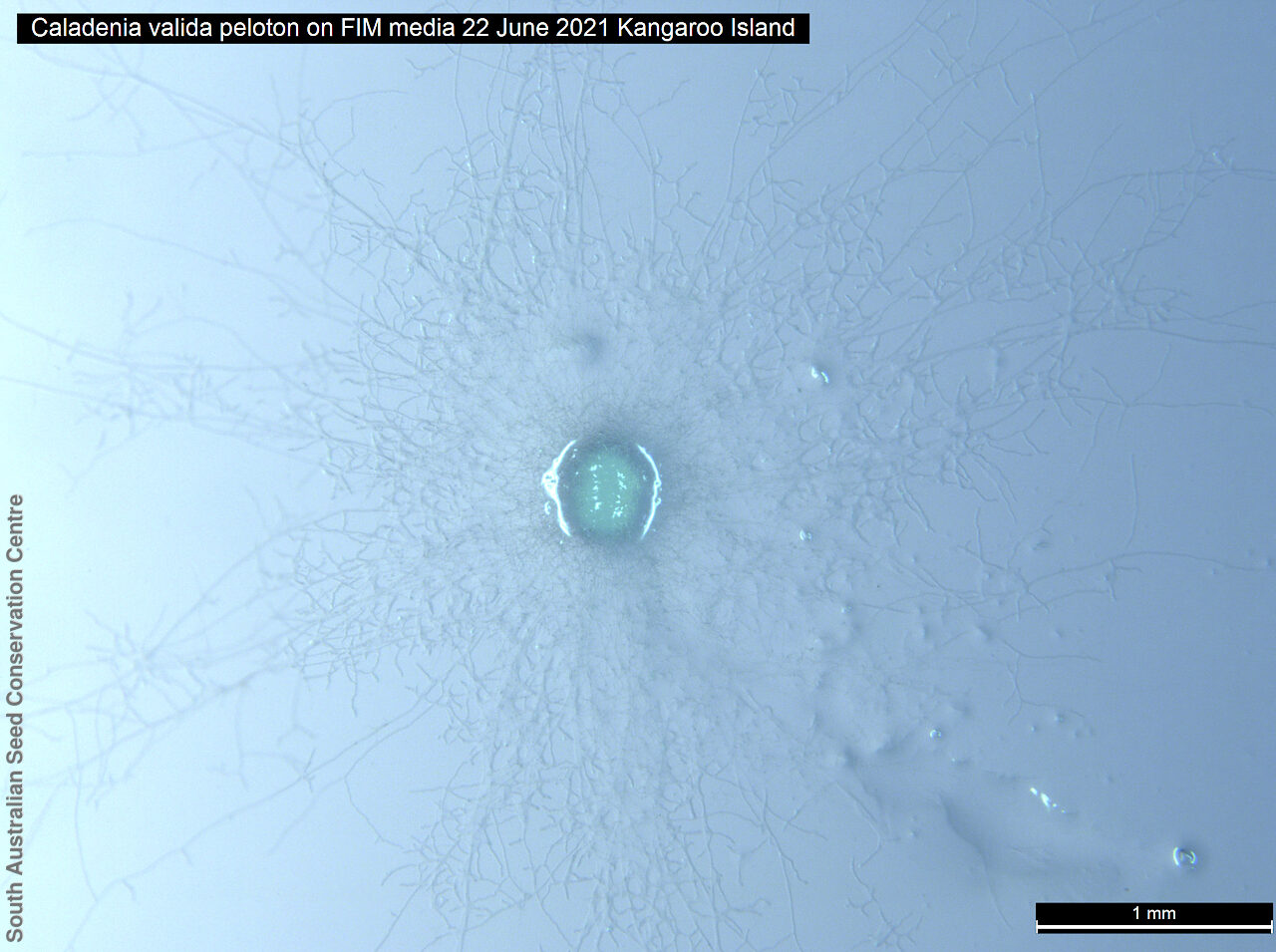
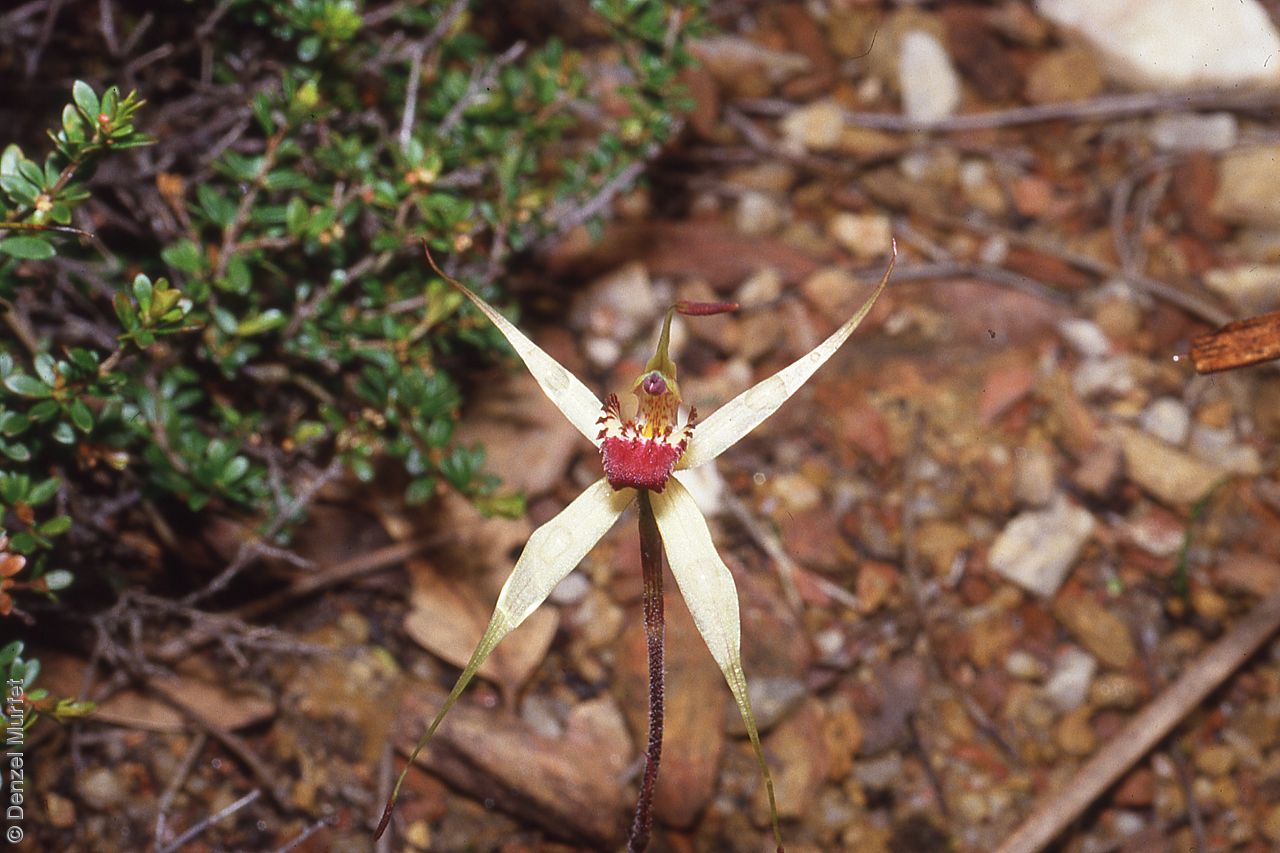
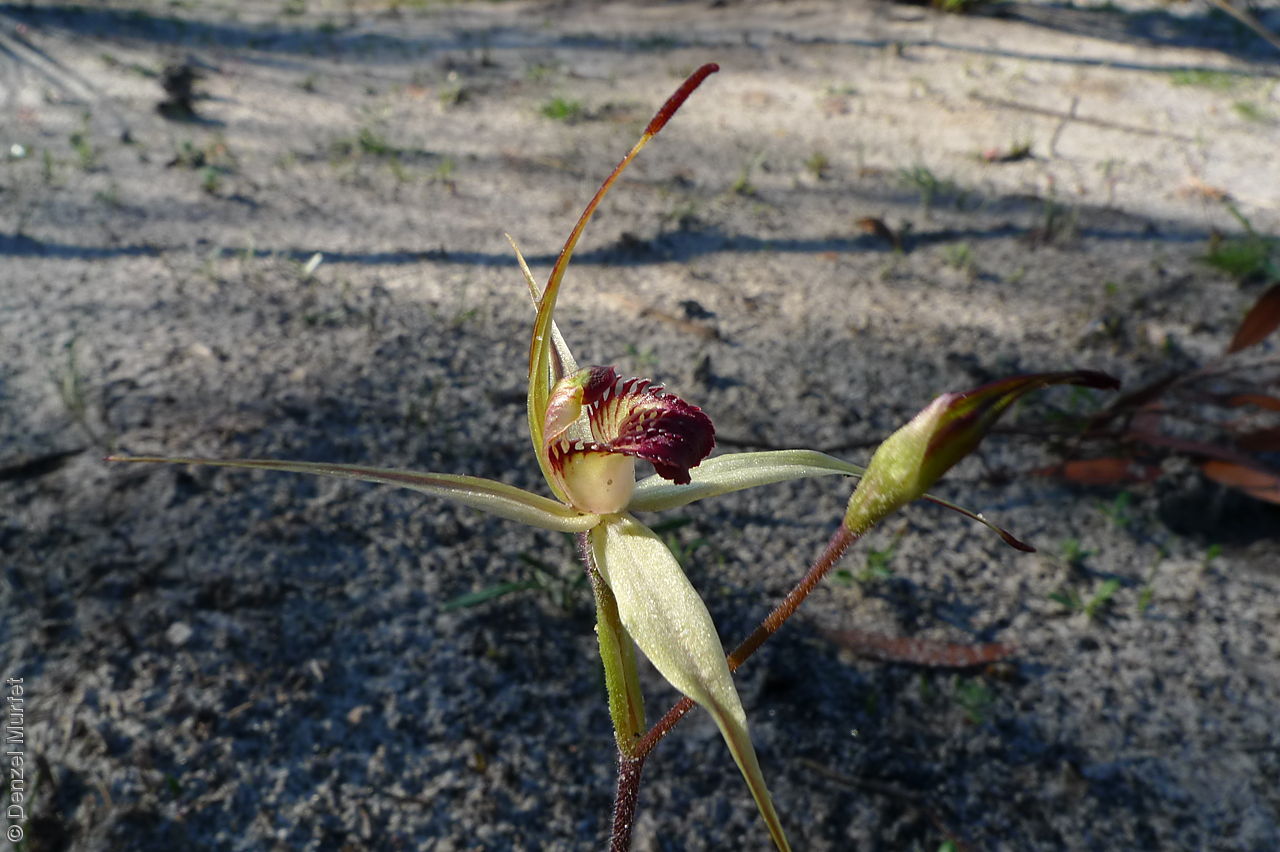
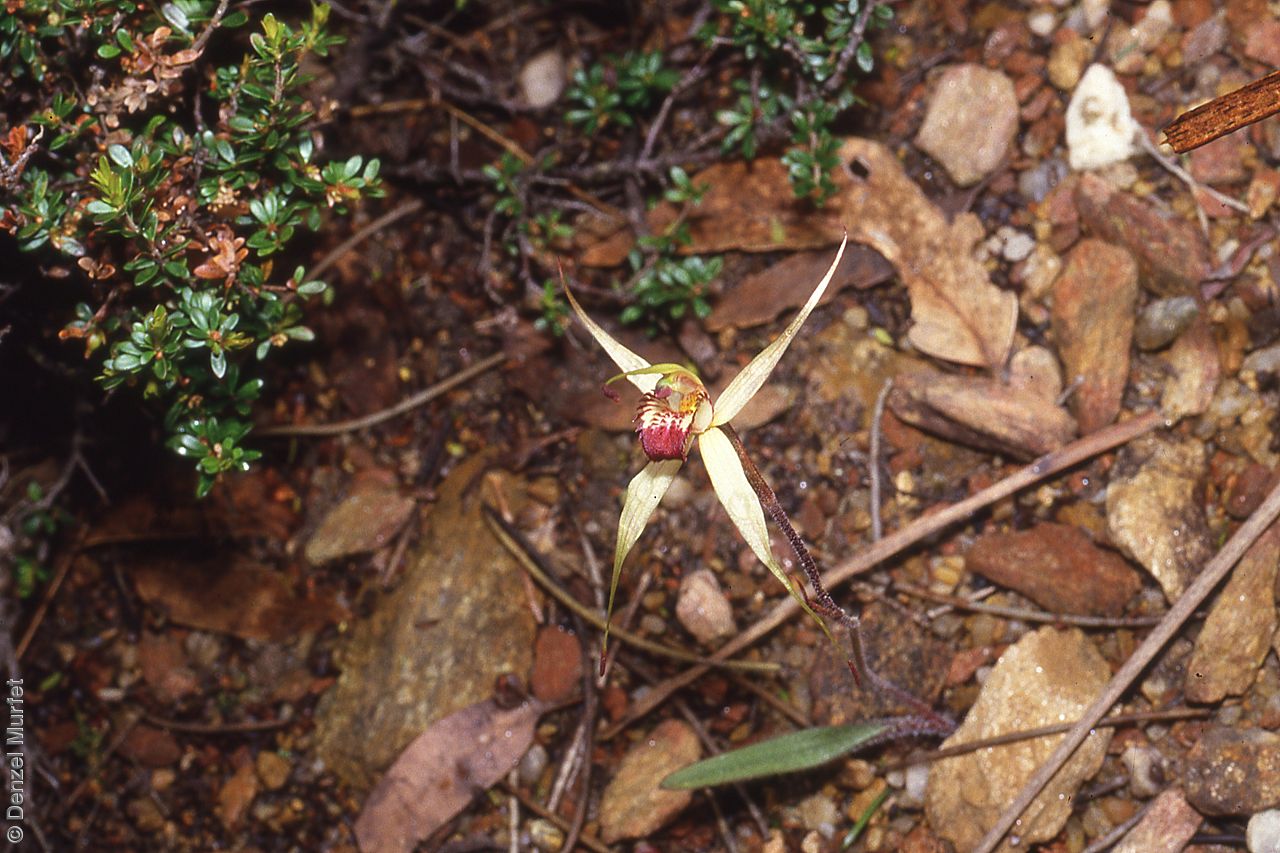
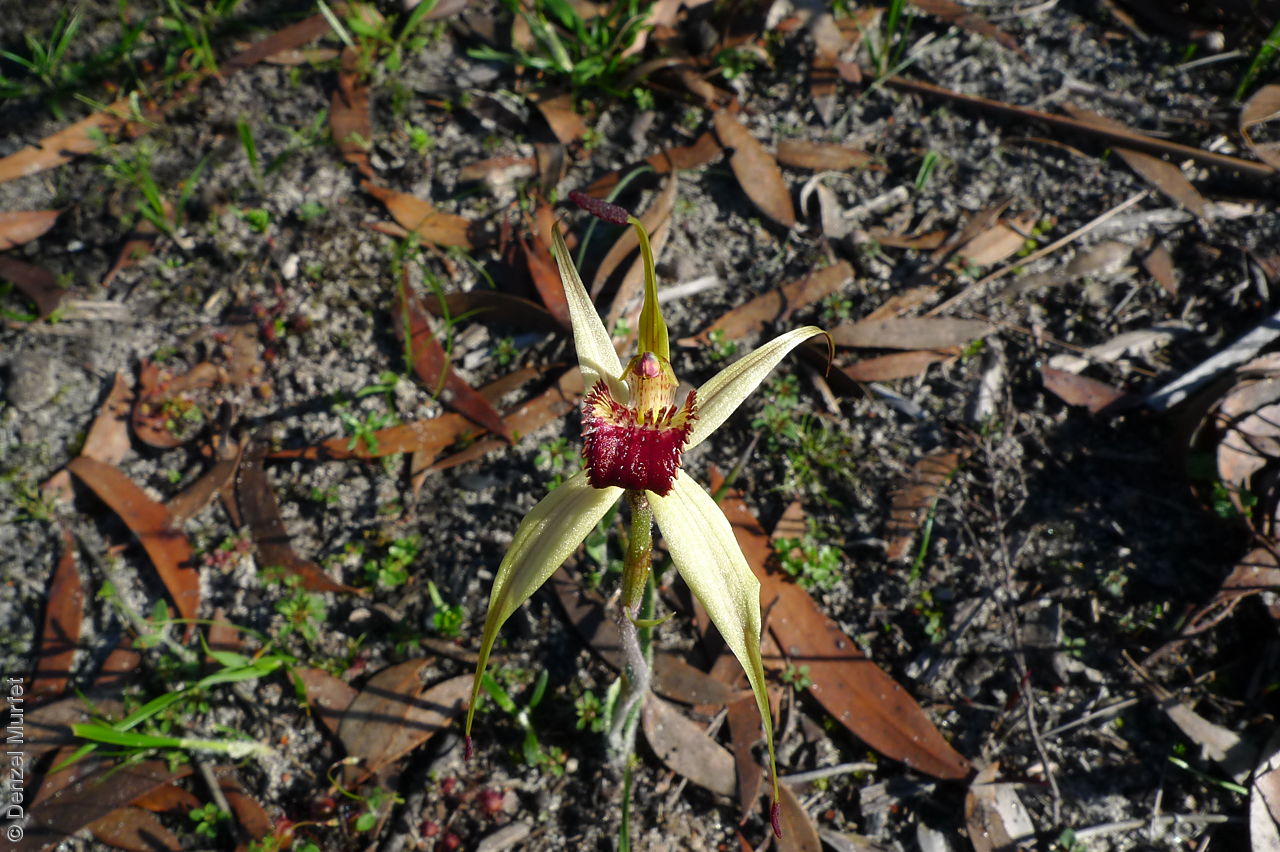
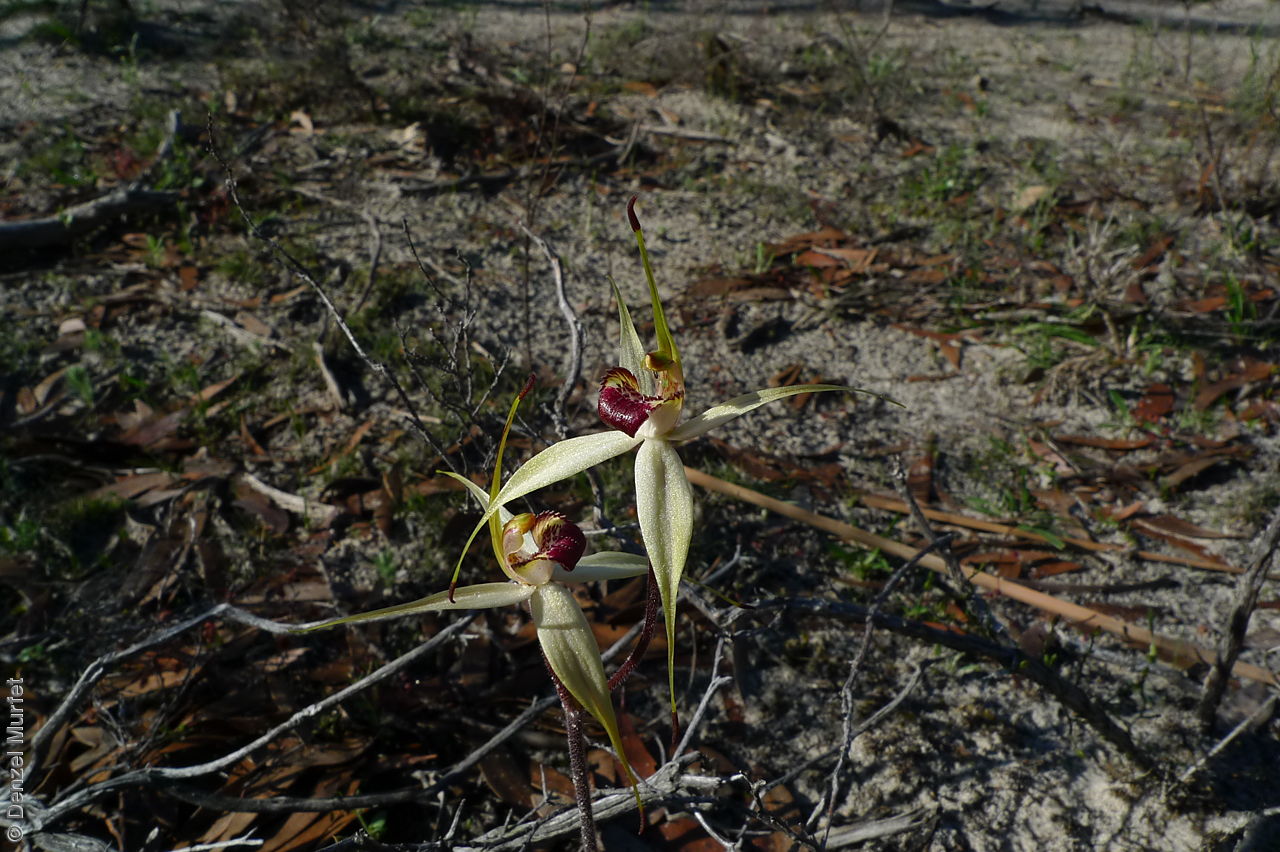
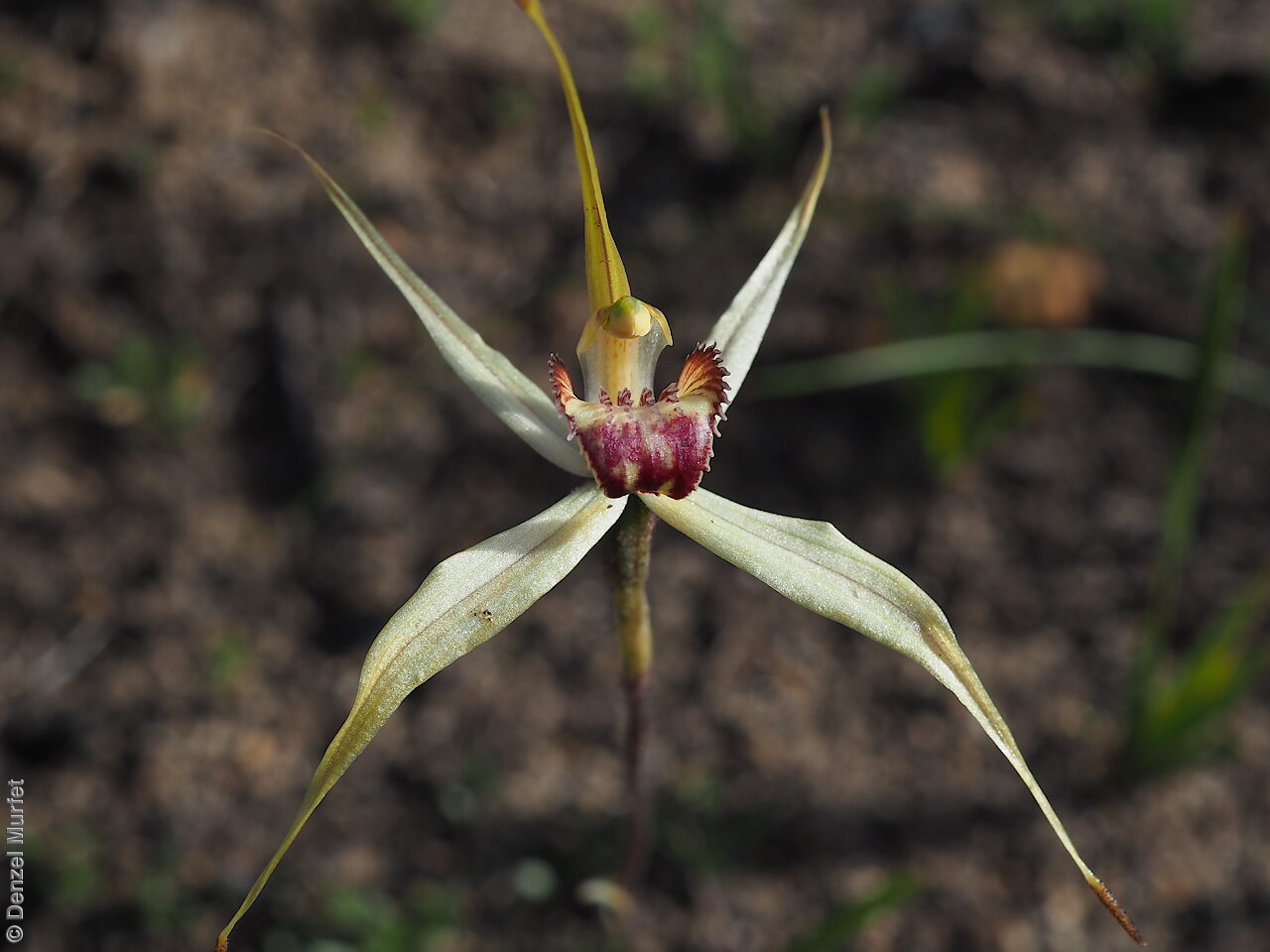
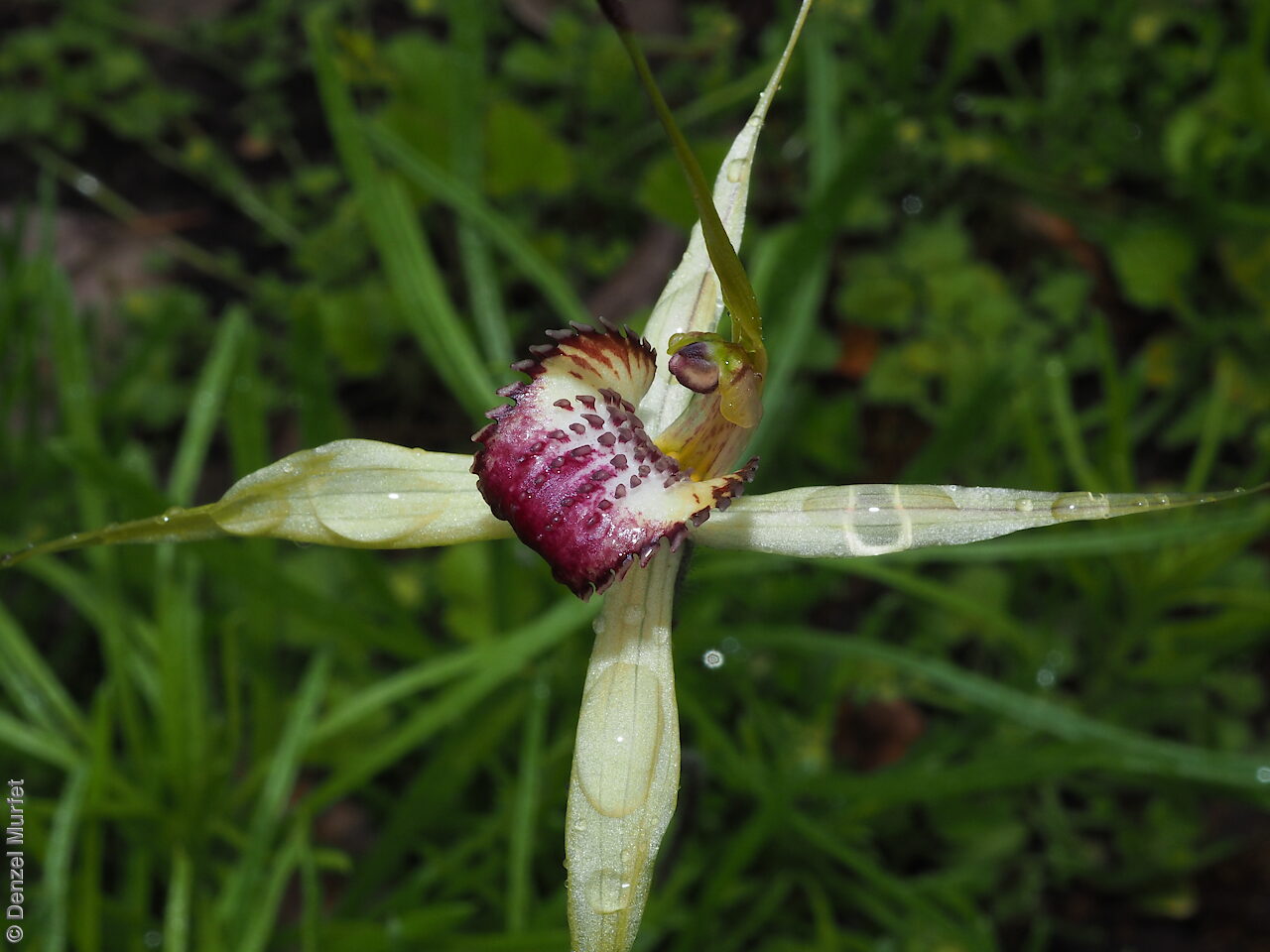
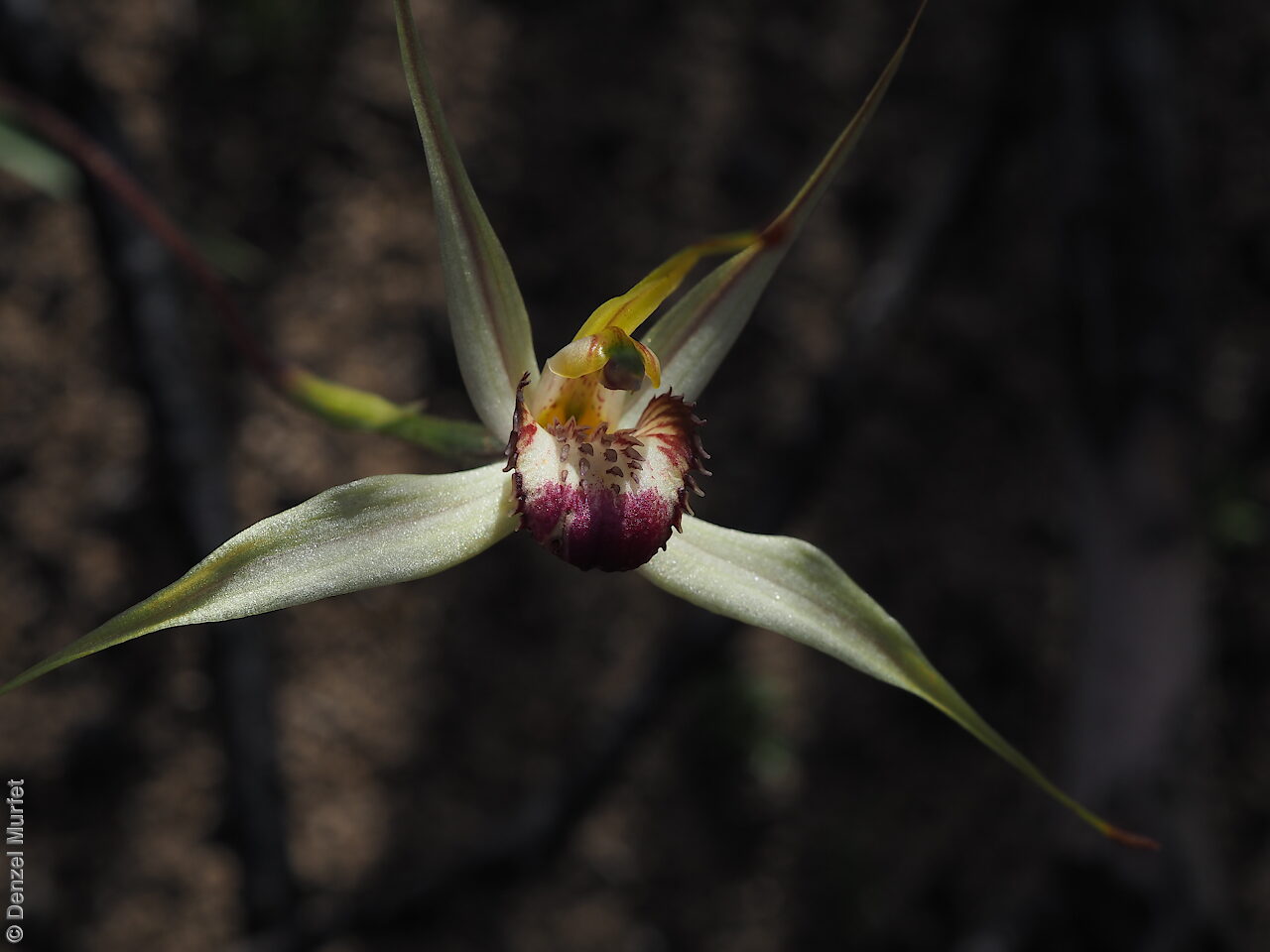

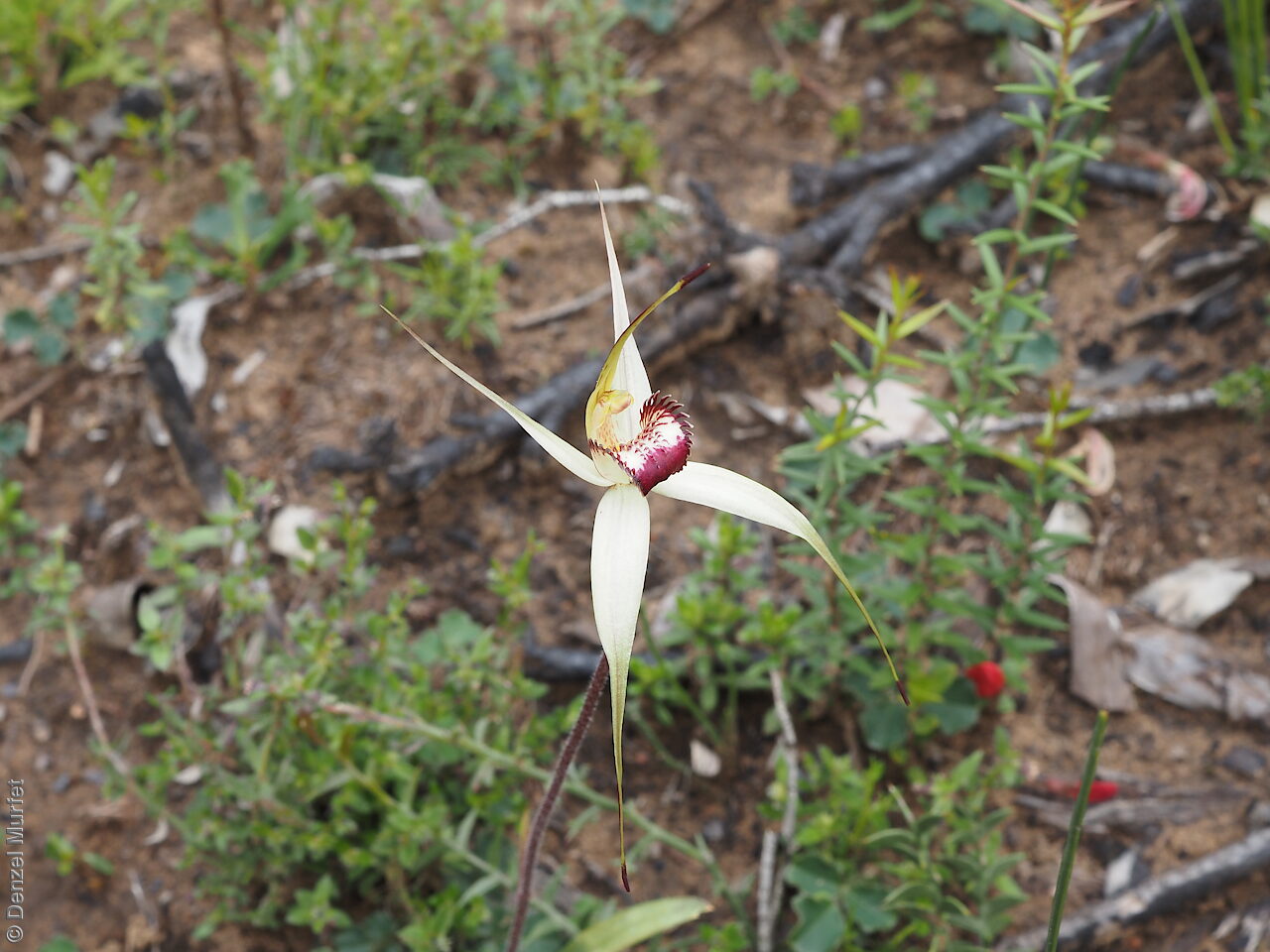

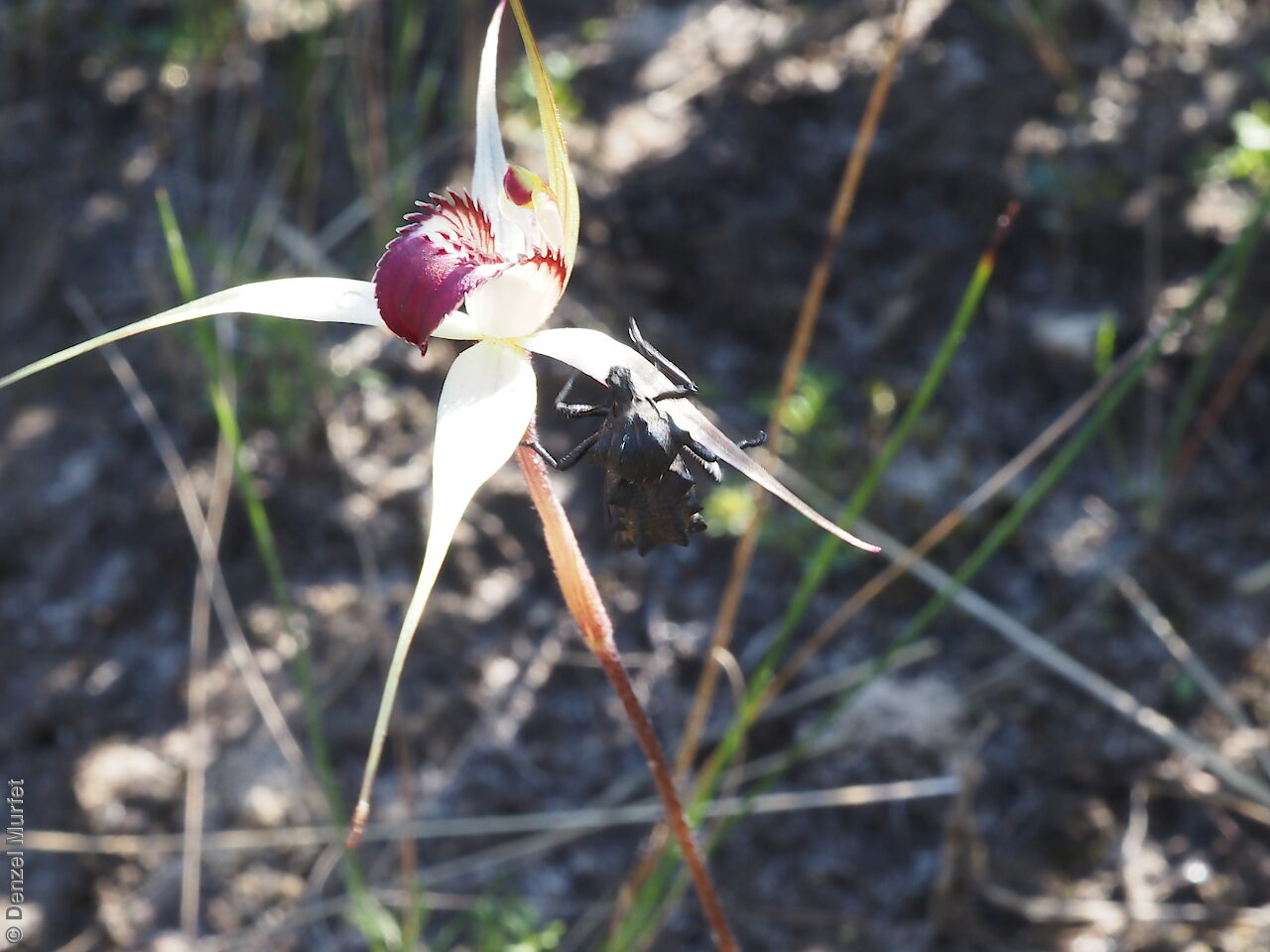
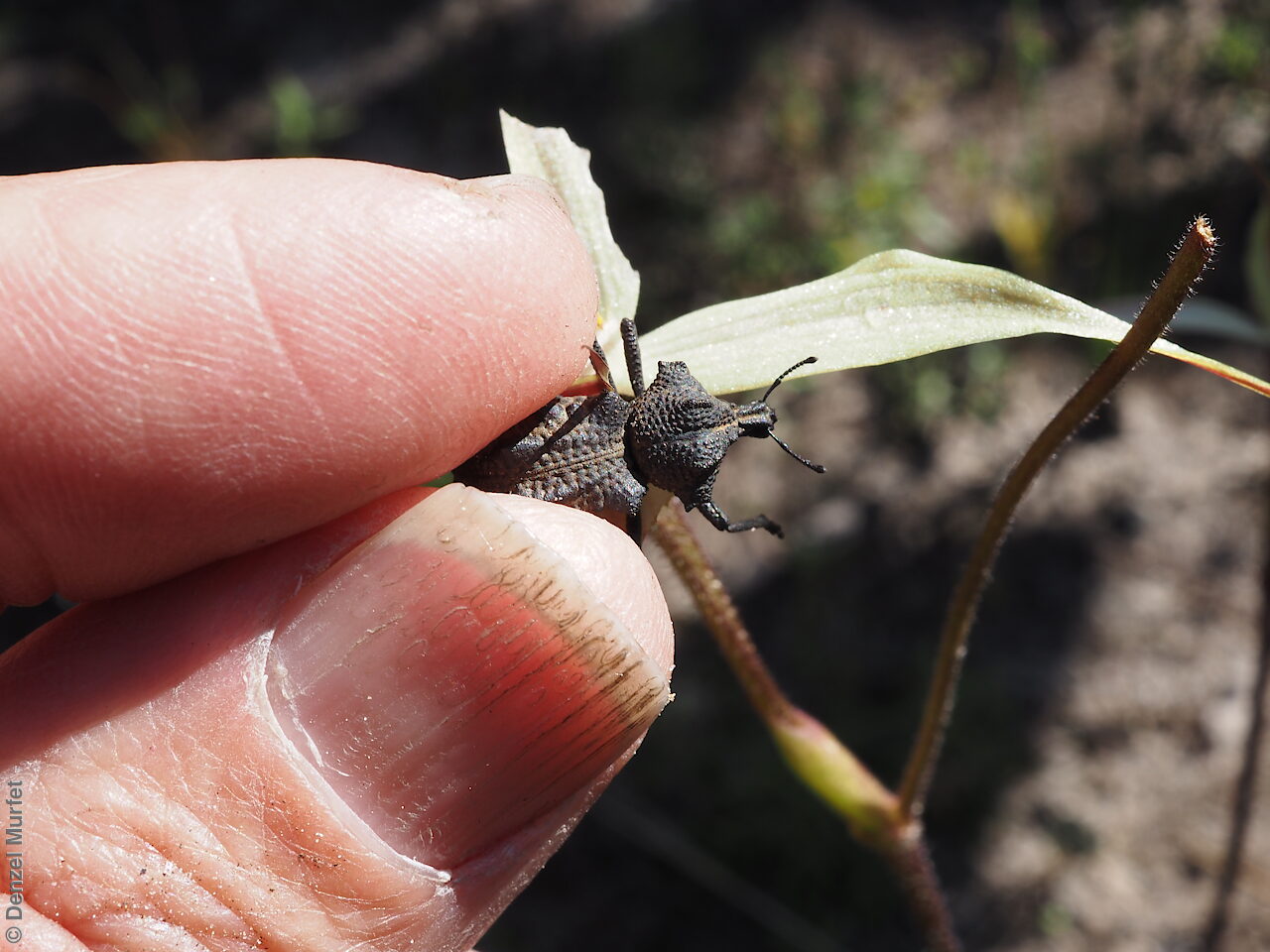
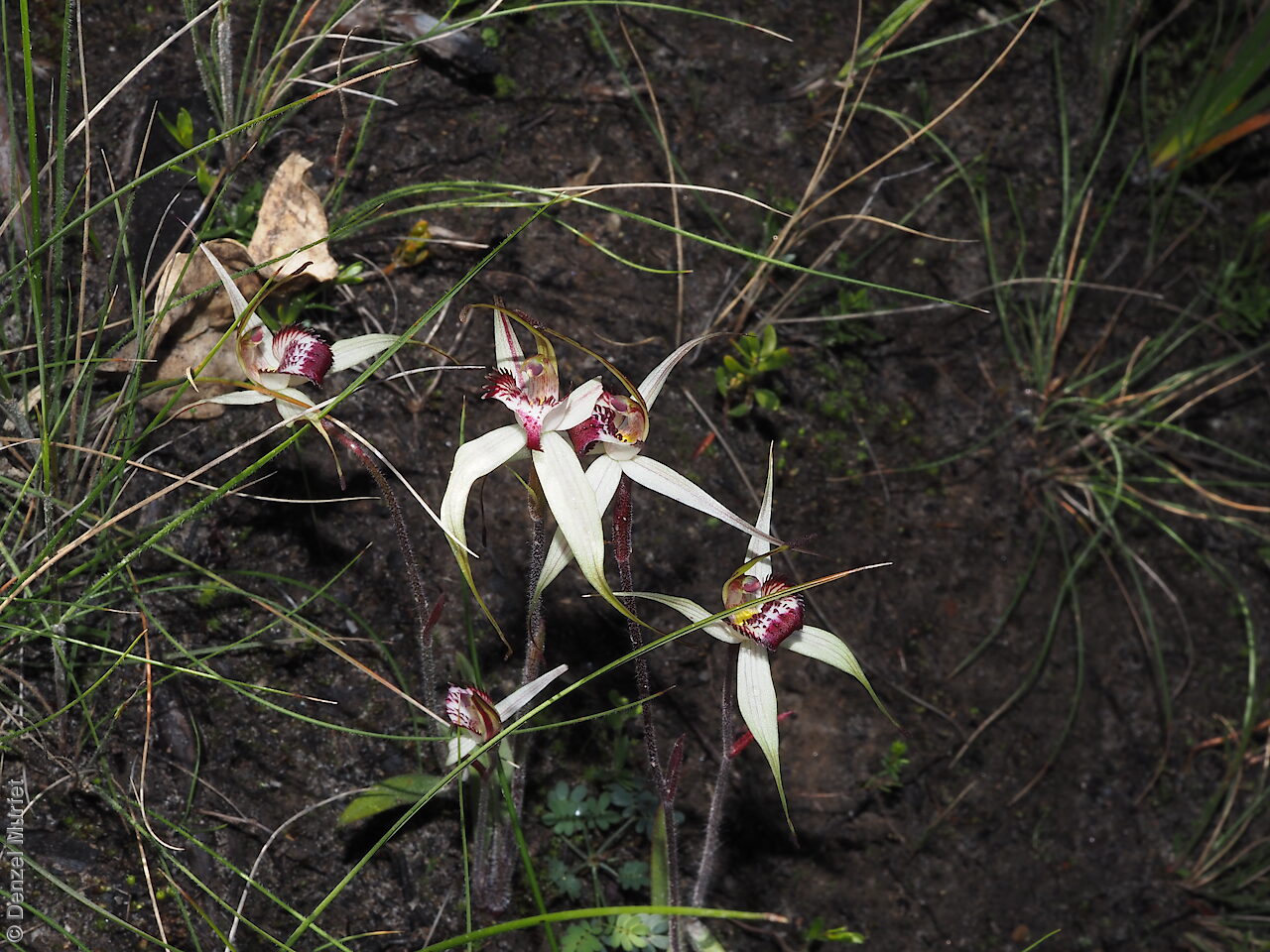
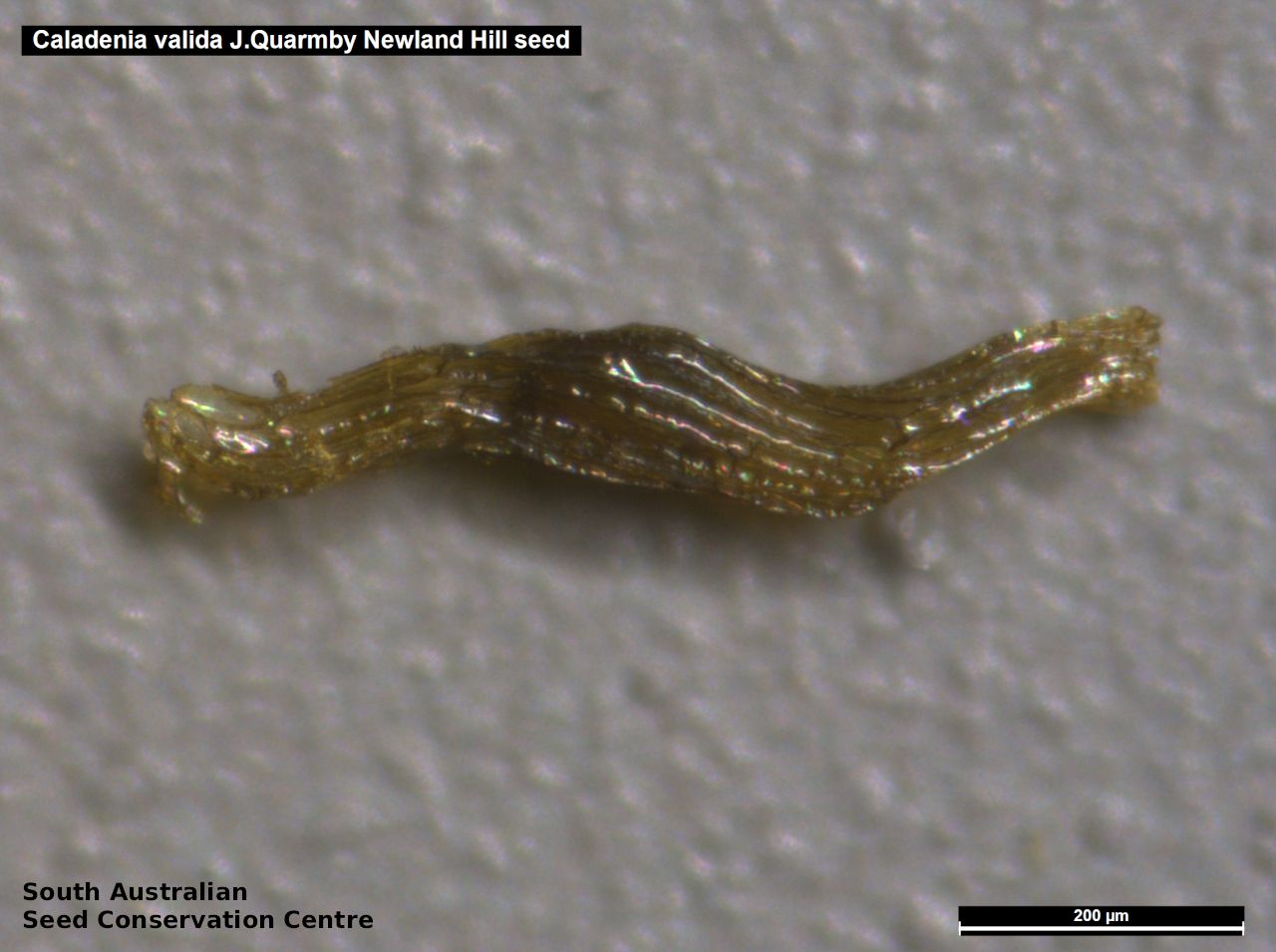

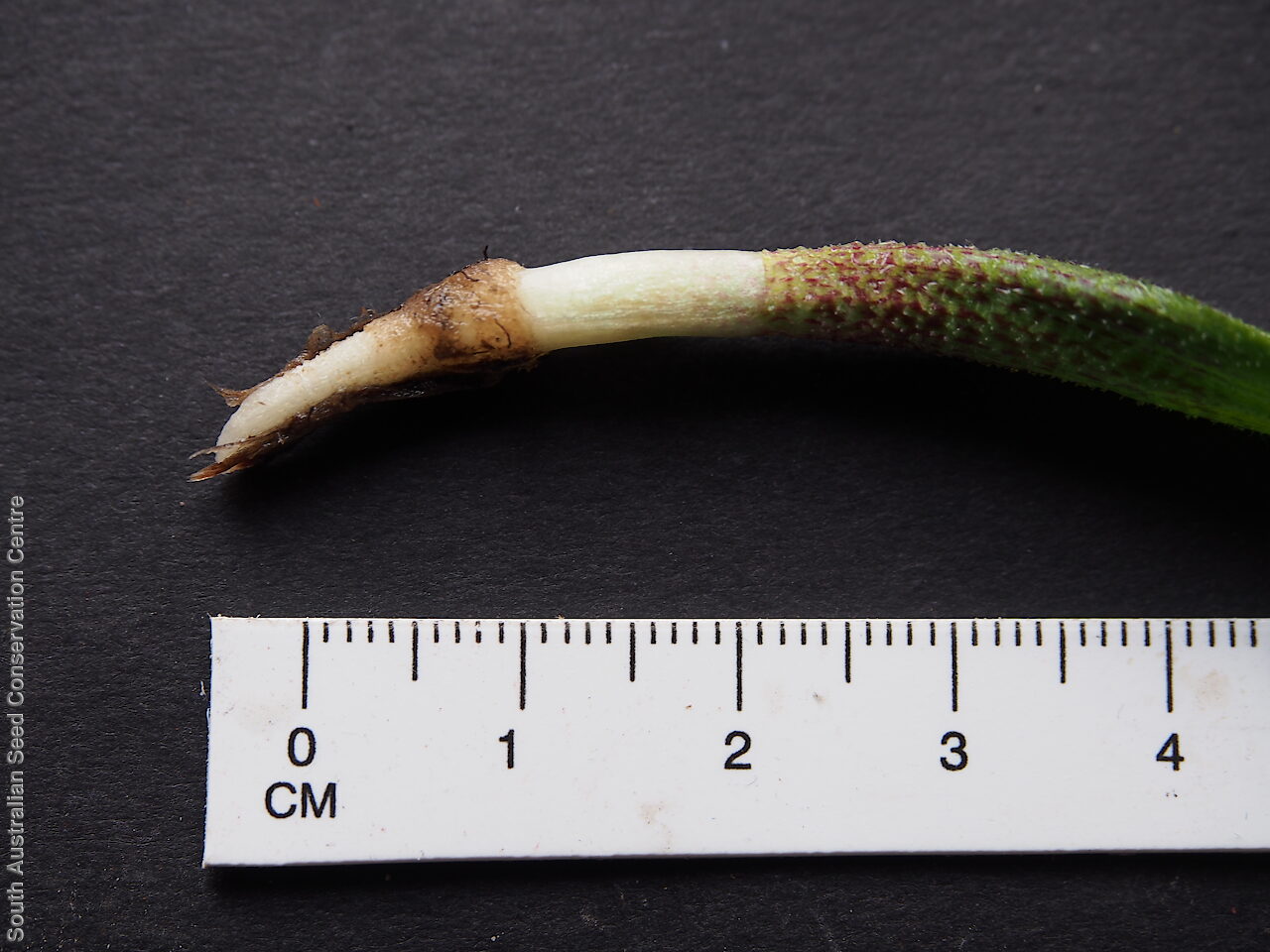

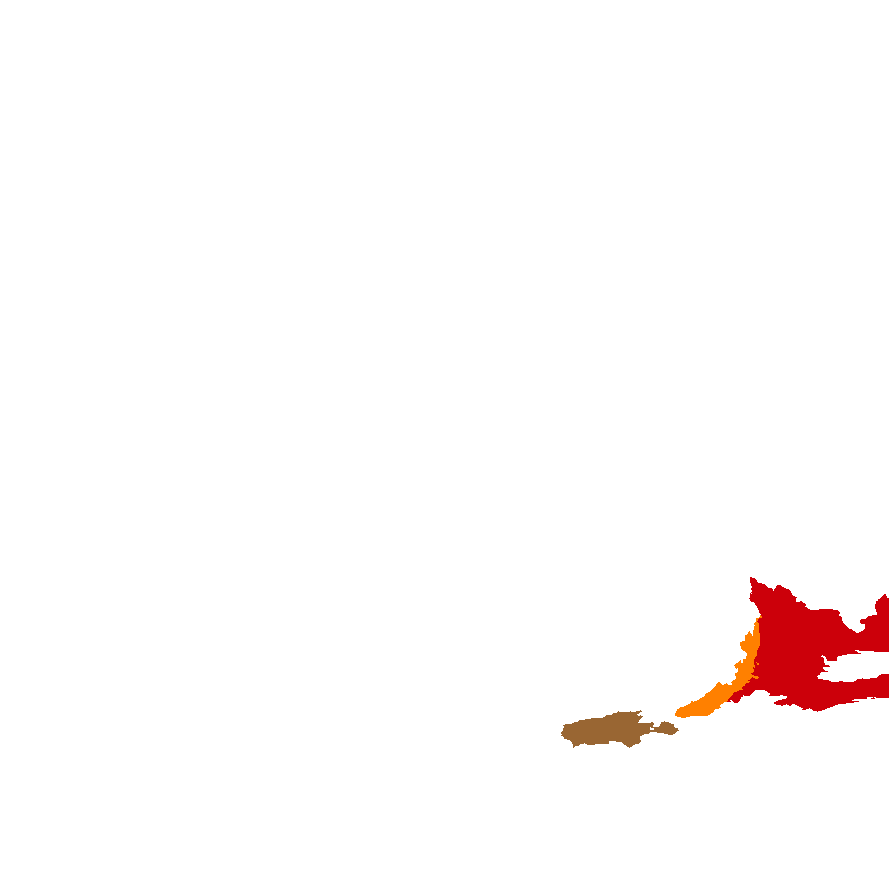
Prior names
Arachnorchis valida
Calonemorchis valida
Calonema validum
Caladenia aff. huegelii Rchb.f.
Caladenia reticulata var. valida
Caladenia fitzgeraldii
Etymology
Caladenia from the Greek 'kallos' meaning beauty and 'aden' meaning a gland, referring to the colourful labellum and the glistening glands at the base of the column that are present in many of the species. Valida from the Latin 'validus' meaning well-developed or strong, possible referring to its taller stature and larger flowers compared to C. reticulata with which it was once included (although the author did not give a reason for applying this name).
Distribution and status
Found on Kangaroo Island and the Fleurieu Peninsula in South Australia, growing on sandy and lateritic soils in heathland or heathy woodland. Also found in Victoria. Native. Rare in South Australia. Very rare in Victoria.
Herbarium regions: Southern Lofty, Kangaroo Island, South Eastern
NRM regions: Adelaide and Mount Lofty Ranges, Kangaroo Island, South East
AVH map: SA distribution map (external link)
Plant description
Annual terrestrial orchid to 40 cm high in flower with a single hairy lanceolate leaf to 15 cm long. Inflorescence on a hairy slender stem with one (sometimes two) white to cream (greenish on opening) flowers with red streaks. Segments abroad at the base and tapering to a fine points. Labellum on a tremulous claw, whitish with a red tip and margins with red and white teeth. Lamina with 4-6 rows of red calli. Flowering between August and October. Fruits are pale-brown hairy, papery ellipsoid capsule.
Seed collection and propagation
Collect seeds between late October and November. Collect fat capsules as they start to dry and turn brown. Pods will split and release the seeds quickly and will require monitoring. To increase the chances of collecting mature pods, it is recommended that a small breathable bag (ie. Organza bags) be used to enclose the developing capsules. Place the capsules in a container that will hold fine seeds and leave to dry for a few weeks or until the capsule split. Then carefully hold the capsule and tap it gently to release the seeds. Store the seeds with a desiccant such as dried silica beads or dry rice, in an air tight container in a cool and dry place, refrigerator or in liquid nitrogen. Seed germination in orchid species is difficult in the absence of symbiotic mycorrhizal fungi.
Fire response
Obligate re-spouter and re-seeder.
Longevity: ?? years
Time to flowering: ?? years
Recovery work
In 2020-2021 this species was assessed post-fire in 1 year old fire scars. A total of 33,000 seeds have been collected & banked for a population outside the 2020 fire scar. Further populations will be assessed and seeds collected on Kangaroo Island in 2021–2022. Germination screening testing the response to fire cues will be undertaken in 2021. The project work is supported by John T. Reid Foundation.
| Location | No. of seeds (weight grams) | Number of plants | Date collected | Collection number Collection location | Date stored | % Viability | Storage temperature |
|---|---|---|---|---|---|---|---|
| BGA | 160,000 (0.058 g) | 3 | 10-Nov-2010 | J. Quarmby Southern Lofty | 10-Aug-2022 | 65% | -80°C |
| BGA | 177,300 (0.063 g) | 3 | 13-Oct-2021 | Range Rd & Waitpinga Rd Southern Lofty | 10-Aug-2022 | N/C | -18°C |
| BGA | 33,000 (0.012 g) | 3 | 29-Oct-2020 | J.J.Smith Southern Lofty | 10-Aug-2022 | N/C | -18°C |
| BGA | 263,300 (0.094 g) | 6 | 28-Sep-2021 | DJD4038 Kangaroo Island | 10-Aug-2022 | N/C | -18°C |
| BGA | 1,324,000 (0.473 g) | 19 | 28-Sep-2021 | JRG817 Kangaroo Island | 10-Aug-2022 | N/C | -18°C, -80°C |
| BGA | 910,000 (0.325 g) | 15 | 9-Oct-2021 | DJD4038 (Andy Young collection) Kangaroo Island | 10-Aug-2022 | N/C | -18°C, -80°C |
Number of plants: This is the number of plants from which the seeds were collected.
Collection location: The Herbarium of South Australia's region name.
% Viability: Percentage of filled healthy seeds determined by a cut test or x-ray.